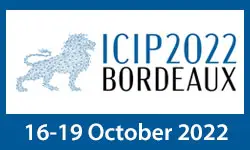Adversarial Pairwise Reverse Attention For Camera Performance Imbalance in Person Re-Identification: New Dataset and Metrics
Eugene P.W. Ang, Shan Lin, Rahul Ahuja, Nemath Ahmed, Alex C. Kot
-
Members: FreeSPS
IEEE Members: $11.00
Non-members: $15.00Length: 00:09:39
19 Oct 2022
Mid-infrared spectroscopic imaging (MIRSI) is an emerging class of label-free, biochemically quantitative technologies targeting digital histopathology. Conventional histopathology relies on chemical stains that alter tissue color. This approach is qualitative, often making histopathologic examination subjective and difficult to quantify. MIRSI addresses these challenges through quantitative and repeatable imaging that leverages native molecular contrast. Fourier transform infrared (FTIR) imaging, the best-known MIRSI technology, has two challenges that have hindered its widespread adoption: data collection speed and spatial resolution. Recent technological breakthroughs, such as photothermal MIRSI, provide an order of magnitude improvement in spatial resolution. However, this comes at the cost of acquisition speed, which is impractical for clinical tissue samples. This paper introduces an adaptive compressive sampling technique to reduce hyperspectral data acquisition time by an order of magnitude by leveraging spectral and spatial sparsity. This method identifies the most informative spatial and spectral features, integrates a fast tensor completion algorithm to reconstruct megapixel-scale images, and demonstrates speed advantages over FTIR imaging while providing spatial resolutions comparable to new photothermal approaches.



